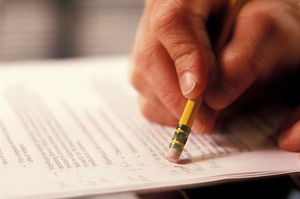 How to edit your dissertation is a process which you can do following big important steps. Just like a set of stairs or a ladder, these steps have an ultimate destination. The end goal of your editing is not simply to complete the editing to the last part of what you have written. The apex of your climbing of this ladder is to make sure that each part of your work is consistent with your thesis statement or proposition. In other words, editing is also the process of verifying whether you have sufficiently supported your argument.
How to edit your dissertation is a process which you can do following big important steps. Just like a set of stairs or a ladder, these steps have an ultimate destination. The end goal of your editing is not simply to complete the editing to the last part of what you have written. The apex of your climbing of this ladder is to make sure that each part of your work is consistent with your thesis statement or proposition. In other words, editing is also the process of verifying whether you have sufficiently supported your argument.
Along the way towards achieving your main purpose of editing, you will also need to check other equally important aspects of your writing work. They are grammar, spelling, punctuation, formatting, citation, referencing, usage and language, among many. These are secondary elements of academic writing which should also be well taken cared for with perfection. You are expected to have no error regarding these components as they are only secondary components. This means that you should be able to take care of them more than any other aspect.
Overall Review
The first step in editing your dissertation is reviewing it as a whole. In connection with this, you should go back to the outline you have prepared in the early stages of your writing. Compare what you have come up with to your original plan. Check whether you were able to give a response to the main question or title through a clear argument. See to it that the substance of your writing fits your title. You can revise your title or topic to match whatever central theme you have developed especially if you have observed that the focus of your work has shifted.
Chapter Level
After reviewing your dissertation as a whole, reexamine it by chapter or section. Give each portion a descriptive title to help you verify whether everything you have included in it are directly relevant points and details. Look out for particulars which may be outside the “province” of the section. If any, take note of them and look for other sections in which they belong. You may even find out that you have already mentioned them in chapters where they are indeed appropriate for. What is important here is that you check each point for relevance. There are points which are relevant to the chapter in which you have written them but you have not clearly defined such relevance. You can do so when you do this phase of the editing.
Paragraph and Sentence Levels
Lastly, you need to review and edit at the paragraph and sentence level. After reviewing and editing the sections or chapters one by one, you must recheck your construction of sentences and paragraphs. This is the level where you review and edit your grammar, spelling, punctuation and related aspects. Here, you also add checking the formatting like indentions, font, paper size and others which were specified by your supervisor or department.
 English
English 中文
中文
